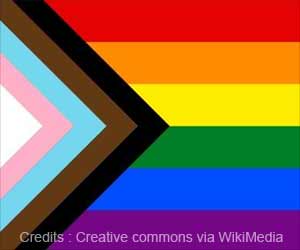
“We are flying in a data-free zone,” said study author Dr. Jesse Ehrenfeld, who is board certified in both anesthesiology and clinical informatics and trained at the Massachusetts General Hospital.
‘Understanding the challenges faced by the LGBTQ physicians and students during training can help improve their health needs and develop them into competent practicing physicians.’
“Fundamentally, LGBTQ students have remained invisible and will remain so until we make changes. We won’t bring a marginalized population out of the shadows and into the mainstream until we have the right data.”
Data supports diversity measures
Researchers sent secure, confidential electronic surveys to 180 osteopathic and allopathic medical schools in July 2019 to determine whether accurate sexual and gender minority (SGM) demographic data is being consistently collected by US medical schools during admissions and enrollment.
The nine-question survey queried for the ability of students to self-report sexual and gender minority status during admissions and enrollment, and availability of sexual and gender minority specific resources and support services for students.
Forty-two percent of the medical school programs responded to the survey. Of the 75 respondent schools, 73% allowed applicants to self-report a gender identity other than male or female, while only 20% allowed applicants to report sexual orientation.
“We don’t exactly know what the physician workforce looks like today in terms of sexual orientation and gender identity. We don’t know who is coming into medical school, who is finishing, what practices or specialties people are going into,” said Dr. Ehrenfeld. “Until we do, we’ll be grasping to understand why LGBTQ medical students, physicians, and ultimately patients, struggle to access the care they need.”
READ RELATED: Coronavirus could cause ‘SAME damage as a heart attack in 75% of patients’
LGTBQ data and funding has historically been limited
Only 0.1% of National Institutes of Health (NIH) funded projects were related to LGBTQ health in 2014. In 2015, the NIH developed the first agency-wide strategic plan to focus on increasing funding for sexual and gender minority health research. That same year it designated sexual and gender minorities as a health disparity population for which increased research funding would contribute to improved treatment and health outcomes.
“We must recognize that understanding sexual orientation and gender identity is essential to training and retaining the qualified and motivated LGBTQ medical students who will develop into competent practicing physicians,” said Dr. Ehrenfeld. “Just as LGBTQ patients are underserved, we believe LGBTQ medical students are underrepresented and under-supported. One is unlikely to change without the other.”
In 2020, the National Academies of Sciences, Engineering, and Medicine released a report that highlighted inequities faced by individuals from LGBTQ groups across multiple domains, including but not limited to the legal system, public policy and stigma, community and civic engagement, family and social relationships, educational environment, economic stability, physical and mental health, and health care coverage, access, and utilization.
“This is the start of work to understand the challenges LGBTQ physicians and students face during their training,” said Dr. Ehrenfeld. “Once we have an understanding of where there are gaps, we’ll be able to determine how we create the channels that lead to success.”
Source: Eurekalert
Source:







